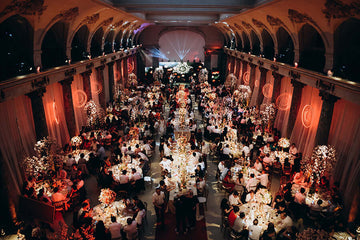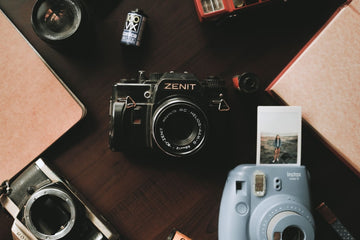Best Practices for Event Photography
Feb 28, 2020

Capturing the atmosphere of events like athletic games, weddings, birthday parties, trade shows, etc. can be a challenge for photographers, particularly those who are new to this niche of photography. Fortunately, you can optimize your opportunities to get the best shots. You will simply need to follow certain guidelines.
The following are some of the best practices for event photography:
Shooting in RAW Format
Shooting in RAW format has many advantages. One of them is the ability to utilize all the pixels on the imaging sensor to retain all the image detail in the file. White balance, saturation, sharpness, and exposure can then be changed in post processing software without compromising the image quality. This is the practice many professional event photographers follow.
Using Fast Shutter Speeds for Action Shots
If you want to capture a singer’s croon or an athlete’s gait, then timing your shot is extremely important. For this, using fast shutter speeds is recommended, even if it requires you to use a high ISO setting. If you are getting too much noise in the music and performance art shots, then change the shot into black and white. Not only will this fix the problem, but it will also transform the captured moments into a timeless aesthetic.
Using a Fast Aperture and Minimizing the Use of Flash
Entertainment events are usually quite dark, particularly for photographers as it can be really difficult to take the photos from a distance. There are two things you can do in such lighting conditions. First, use a lens with a large aperture and try to get as close to the stage as possible. A lens with a large aperture will allow you to gather as much light as possible, hence providing you with a fast shutter speed. This will also minimize the need to use flash.
Illuminating with Help from Beam and Spot Lights
Theatre and concert venues are generally dimly lit. Professional event photographers deal with this issue by using spot and beam lights to get the required brightness. With spot and beam lights on your side, all you need to do is time your shot so that flashing or oscillating lights illuminate your subject. You can use the lights to see how different colors in venue lighting affect the appearance of your subject. If you are looking for striking effect, shooting straight into the light source will do the job.
Taking More Shots Than Required
In any event, you have limited time to get photos. So, you shouldn’t waste any of it and focus on staying active. There’s no need to check your camera display after taking each photo to review your previous shot. Keep shooting and take more shots than you think are needed.
Taking Caution with Photo Rights
Before you decide to sell your event photos, it is highly recommended that you choose the photos over which you have legal rights. Copyright law gives public figures e.g. musicians, athletes, etc. the right to seek compensation from you if you try to earn profit from their unlicensed image.
These are some of the best practices for event photography. Following them will help you capture the amazing moments and allow your event photography to tell the story in the best way possible.





